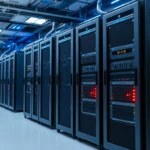Understanding Technology: Definitions and Concepts
Technology is deeply embedded in the fabric of our lives, shaping how we interact, learn, and perform tasks in both personal and professional realms. At its core, technology represents technology as the use of scientific knowledge and techniques to solve problems, improve processes, and create new pathways for growth and development. This section delves into the multifaceted nature of technology, highlighting its scientific underpinnings, everyday applications, and common misconceptions.
The Science Behind Technology
Understanding the scientific foundation of technology is crucial to appreciating its vast capabilities. The definition traditionally revolves around the application of scientific principles to create tools and methods for solving real-world issues. This application spans multiple fields, including engineering, information technology, and biotechnology.
For instance, the integration of physics and chemistry into engineering designs leads to innovations such as renewable energy technologies and advanced materials. The lifecycle of such technologies often begins with a thorough scientific investigation of materials, mechanisms, and processes that can be harnessed to create user-friendly products.
Technology in Everyday Life
From the moment we wake up to the sound of an alarm clock to the time we unwind with streaming services, technology seamlessly integrates into our daily routines. Consider smartphones, which combine multiple functionalities into a single, portable device: communication, navigation, and entertainment. Additionally, household appliances like smart refrigerators and robotics assist in routine tasks, allowing us to focus on more critical endeavors.
The rise of the Internet of Things (IoT) has further enhanced our lives by connecting devices, allowing for smarter homes and cities. This interconnectedness facilitates improved efficiency and provides users with better control over their environments.
Common Misconceptions About Technology
Despite its pervasiveness, several misconceptions about technology persist. One common myth is that technology only refers to computers or mobile devices. In reality, technology encompasses all tools and machines that help solve problems and make tasks easier or more efficient. This includes everything from the wheel to modern-day robotics.
Another misconception is that technology inherently has positive effects. While technology can enhance productivity and quality of life, it also presents challenges such as job displacement, privacy concerns, and digital addiction. Understanding these aspects is crucial for responsible technology use.
The Evolution of Technology Through History
When considering the rapid pace of technological advancement today, it’s essential to reflect on its historical development. This evolution is marked by significant milestones that have transformed societies and economies worldwide.
Key Milestones in Technological Advancement
The history of technology can be traced back to ancient times, with milestones that include the invention of the wheel around 3500 BC, the printing press in the 15th century, and the steam engine in the 18th century. Each innovation played a crucial role in fostering economic growth and altering social structures.
The Industrial Revolution of the 18th and 19th centuries marked a significant turning point, where mechanization replaced manual labor, enabling mass production. This shift not only boosted productivity but also sparked urbanization as people moved to cities for work in factories.
Impact of Technology on Society
The impact of technology on society has been profound and multi-dimensional. One significant effect has been the reshaping of communication. For instance, the telegraph revolutionized long-distance communication, and the Internet has brought about global connectivity and information access unprecedented in human history.
Moreover, technology has influenced education through e-learning platforms and resources available at our fingertips. Technology in healthcare has led to significant advancements, including telemedicine and electronic health records, ultimately improving patient outcomes and access to care.
Historical Case Studies of Technological Innovations
Examining specific case studies illuminates the transformative potential of technology. For example, the advent of the personal computer in the 1980s democratized access to information technology, enabling businesses and individuals to leverage computing power for various applications.
Similarly, the introduction of mobile phones has shifted communication paradigms, particularly in developing countries, where mobile technology has leapfrogged traditional infrastructure, leading to economic empowerment and social change.
Types of Technology and Their Applications
Technology extends across various domains, each with unique applications that address specific needs and challenges. This section categorizes technology into different types and highlights their relevance in contemporary society.
Information Technology: The Backbone of Modern Business
Information Technology (IT) is critical in today’s digital landscape, serving as the backbone for businesses of all sizes. IT encompasses hardware, software, and networking components that facilitate the gathering, processing, and dissemination of data.
Businesses leverage IT to improve efficiency, enhance data security, and facilitate decision-making. The rise of cloud computing, data analytics, and cybersecurity measures exemplifies how organizations adapt to the ever-changing technological terrain.
Emerging Technologies: AI, IoT, and Beyond
Emerging technologies such as Artificial Intelligence (AI) and the Internet of Things (IoT) are revolutionizing industries. AI enables machines to mimic human intelligence, allowing for advanced data analysis, decision-making, and automation across sectors such as finance, healthcare, and manufacturing.
The IoT connects various devices, enabling them to communicate and share data, leading to optimized operations and improved user experiences. For instance, smart cities utilize IoT technology for traffic management and energy efficiency, enhancing urban living conditions.
Comparing Traditional vs. Modern Technologies
Traditional technologies often involve manual processes and limited efficiency, whereas modern technologies leverage digitalization and automation to enhance productivity and accuracy. For example, traditional manufacturing methods, reliant on manual labor, have been significantly transformed by the adoption of robotics and additive manufacturing (3D printing).
This transition not only creates faster production lines but also introduces customization and sustainability in manufacturing processes, reducing waste and improving overall resource management.
Challenges and Ethics in Technology
With technological advancements come complex challenges and ethical dilemmas that require careful consideration. This section explores key issues surrounding technology adoption and innovation.
The Digital Divide and Accessibility Issues
One of the most pressing challenges is the digital divide—the gap between individuals who have access to modern technology and those who do not. This inequity can stem from socio-economic factors, geographic disparities, and lack of infrastructure.
Addressing the digital divide is crucial for enabling equal opportunities in education, employment, and social participation. Initiatives to promote digital literacy and expand access to technology in underserved communities are essential for closing this gap.
Ethical Considerations in Technology Development
As technologies evolve, ethical considerations become increasingly vital. Concerns about data privacy and security, especially with the rise of big data and surveillance technologies, necessitate robust frameworks for data protection and user consent.
Moreover, the impact of automation on employment raises questions about job displacement and the need for reskilling the workforce to adapt to changing job landscapes. Stakeholders must balance innovation with responsible practices to foster sustainable growth.
Regulatory Challenges and Compliance
Technology regulation presents another layer of complexity, as policymakers grapple with keeping pace with rapid advancements. Legislation surrounding data protection, cybersecurity, and intellectual property must evolve to address emerging challenges effectively.
Compliance frameworks can help organizations navigate these regulations, ensuring they meet legal requirements while fostering innovation. Collaboration between industry leaders and policymakers is crucial for crafting effective regulations that protect consumers while encouraging technological growth.
The Future of Technology: Trends to Watch
The future of technology promises exciting advancements that will continue to shape our world. This section reflects on upcoming trends poised to redefine industries and lifestyles.
Predictions for the Next Decade
Looking ahead, predictions indicate that AI and machine learning will become increasingly integrated into everyday applications, enhancing personalization and user experience. Autonomous vehicles are expected to reshape transportation, while advancements in biotechnology could lead to breakthroughs in medical treatment and health management.
Quantum computing is another game-changer on the horizon, promising unparalleled computational power that could solve complex problems in industries such as finance, logistics, and scientific research.
How Technology Will Transform Industries
Every industry will undergo transformation as technology continues to advance. Healthcare will benefit from telehealth and AI diagnostics, while the education sector will embrace hybrid learning models and immersive technology such as virtual reality.
In finance, blockchain technology is set to disrupt traditional banking by providing secure, transparent transactions. Retail will see further integration of e-commerce and physical shopping experiences, driven by advances in AR and VR.
Preparing for a Technology-Driven Future
To thrive in a technology-driven future, individuals and organizations must foster a culture of innovation and adaptability. This includes investing in continuous learning and development, embracing digital transformation, and prioritizing ethical considerations in technology deployment.
Collaboration among stakeholders—from governments to businesses and educational institutions—will be key in addressing challenges and harnessing technology’s potential to create a better future for all.









